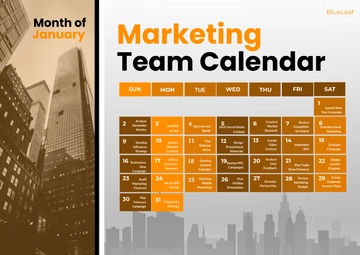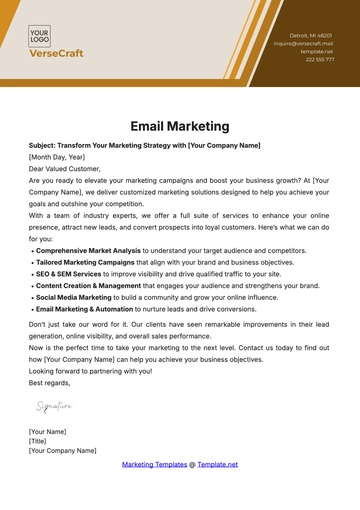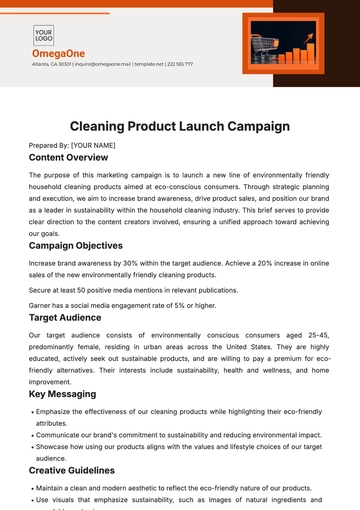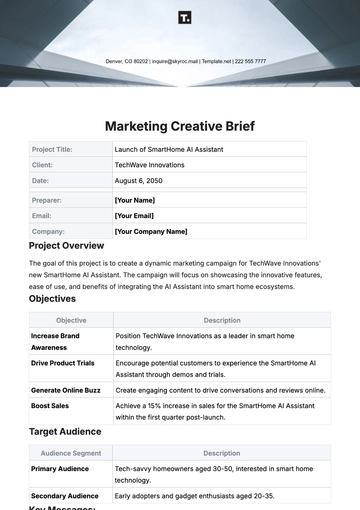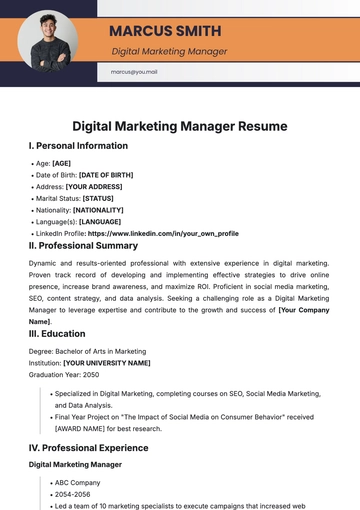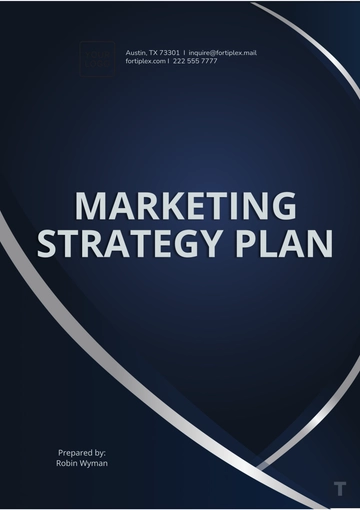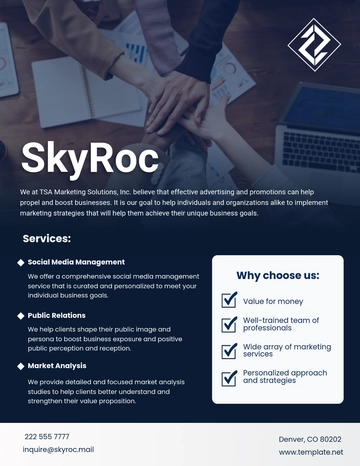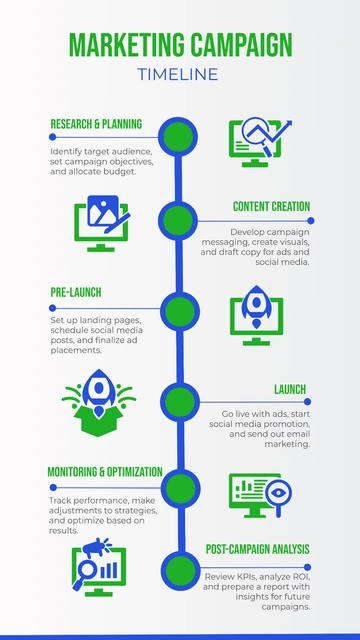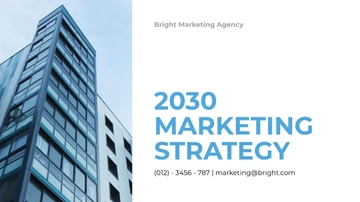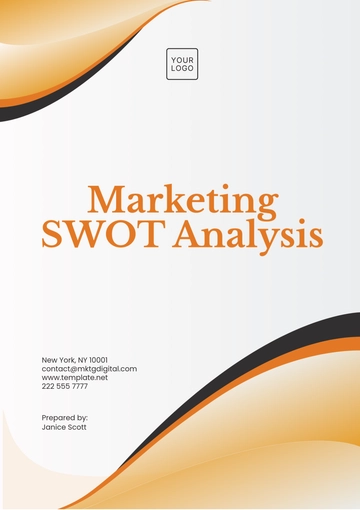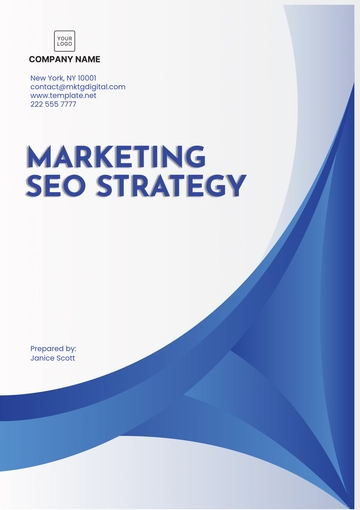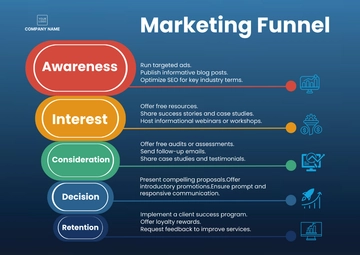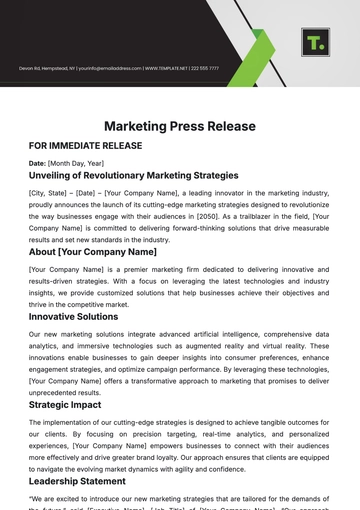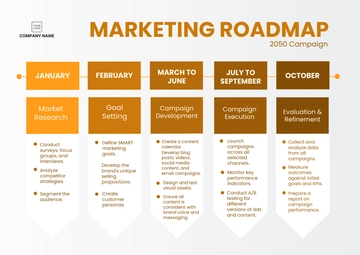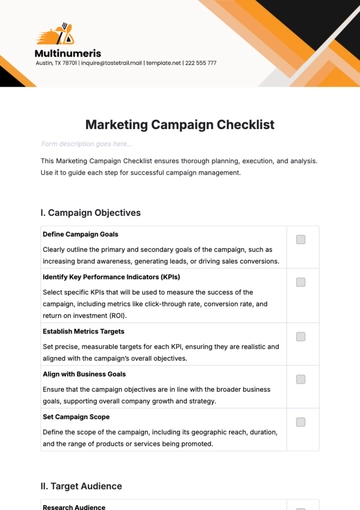Free Marketing Market Size and Potential

I. Market Definition and Overview
At [Your Company Name], we prioritize market definition and overview as the bedrock of effective marketing strategies. Our dedicated team, including [Your Name], specializes in crafting precise market definitions that guide strategic decision-making. We understand that a clear market definition delineates the boundaries, target audience, and competitive landscape essential for success.
This document will provide you with a concise yet comprehensive overview of the market segment under scrutiny. We aim to equip you with the necessary insights for informed marketing choices.
II. Market Size and Growth Trends
Understanding the current market size and anticipating growth trends is essential for your marketing strategy. At [Your Company Name], we are dedicated to providing you with actionable insights into the market's scope and potential growth.
Market Size: The market size, often measured in terms of revenue, sales volume, or other relevant metrics, represents the current scale of the market. As of 2053, the estimated market size for the digital advertising industry is approximately $18 billion, with leading players capturing 40% of the market share.
Growth Trends: To remain competitive, it's crucial to track growth trends. Over the past five years, the market has experienced consistent growth at an average rate of 10%. This growth is driven by factors such as increased digitalization, growing e-commerce, and changing consumer behavior.
Future Projections: Looking ahead, we project continued growth in the market. By 2055 the market size is expected to reach approximately $21 billion, with an annual growth rate of 12%. This presents a promising opportunity for market expansion.
Understanding the market's current scale and future potential is fundamental for shaping your marketing strategies.
III. Market Segmentation
Effective marketing hinges on a clear understanding of your target audience. Market segmentation is the process of dividing the market into distinct and manageable segments based on various criteria. At [Your Company Name], we recognize the importance of segmenting the market to tailor your marketing efforts effectively.
Segmentation Criteria
Demographic
Geographic
Psychographic
Behavioral
Technographic
Segment Profiles
Demographic Segment
Geographic Segment
Psychographic Segment
Behavioral Segment
Technographic Segment
By understanding these distinct segments, we can customize your marketing strategies to resonate with each group's unique needs and preferences.
IV. Competitive Landscape
Analyzing the competitive landscape is essential to gain a strategic advantage in your target market. At [Your Company Name], we meticulously assess the competition to identify strengths, weaknesses, and opportunities for your marketing efforts.
Key Competitors | Market Share (%) | Strengths | Weaknesses |
Competitor 1 | 25% | Extensive client portfolio, digital expertise | Customer retention challenges |
Competitor 2 | 20% | Creative campaigns, international reach | Reliance on traditional advertising methods |
Competitor 3 | 12% | Data-driven strategies | Resource limitations |
V. Customer Analysis
Understanding your target audience is paramount in developing effective marketing strategies. This section delves into the demographics, behaviors, preferences, and pain points of your customers. By gaining insights into their profiles, we can tailor marketing efforts to resonate with their unique needs and preferences, ultimately driving success.
This customer analysis serves as a compass guiding your marketing journey. As you've seen in the accompanying bar graphs, these insights provide a clear picture of your audience. Armed with this knowledge, you can steer your marketing strategies towards the desired destination: customer satisfaction and business growth.
VI. SWOT Analysis
A thorough SWOT analysis enables us to leverage our strengths, address weaknesses, capitalize on opportunities, and develop strategies to mitigate threats. It is a foundational step in crafting a robust marketing strategy that aligns with your business goals.
Strengths | Weaknesses |
|
|
Opportunities | Threats |
|
|
SWOT analysis lays the groundwork for strategic decision-making, ensuring that your marketing efforts align with your business objectives. By capitalizing on your strengths, addressing weaknesses, seizing opportunities, and mitigating threats, you are better equipped to navigate the competitive landscape and drive your business towards sustainable growth.
VII. Market Drivers and Barriers
To navigate the dynamic marketing landscape effectively, it's imperative to identify the key drivers propelling market growth and the barriers that may impede progress. This section delves into the forces that shape your industry and impact your marketing strategies.
Market Drivers |
Rapid advances in technology, such as AI and data analytics, are driving marketing innovation, enabling personalized customer experiences, and enhancing campaign effectiveness.
Evolving consumer preferences and the shift to online shopping have created new opportunities for reaching and engaging with customers.
Keeping abreast of evolving regulations ensures compliance and fosters consumer trust in your marketing practices.
Economic stability or fluctuations influence consumer spending patterns, affecting the overall market demand for your products or services. |
Market Barriers |
Fierce competition within your industry may make it challenging to stand out and capture market share effectively.
Heightened concerns about data privacy and security necessitate responsible data management practices in marketing.
Limited budgets or manpower can hinder the execution of comprehensive marketing strategies.
Algorithms governing online platforms can impact the visibility of your content and affect the effectiveness of digital marketing efforts. |
Understanding these market drivers and barriers is pivotal in formulating agile marketing strategies that adapt to changing conditions. By capitalizing on drivers and mitigating barriers, we position your business for sustained growth and success in the ever-evolving marketing landscape.
VIII. Market Trends and Innovations
Keeping a finger on the pulse of market trends and innovations is essential for staying competitive in the ever-evolving marketing landscape. This section explores the latest developments shaping your industry and highlights innovative approaches that can propel your marketing strategies.
Emerging Market Trends
Content Personalization: Consumers expect highly personalized content experiences, driving the adoption of AI-driven recommendation engines and dynamic content creation.
Sustainability and Ethical Marketing: Increasing environmental and social awareness calls for sustainable and ethically focused marketing campaigns.
Voice Search Optimization: The proliferation of voice-activated devices is reshaping SEO strategies, emphasizing conversational keywords and voice-friendly content.
Video Dominance: Video content continues to gain traction, with short-form videos, live streaming, and interactive videos leading the way.
Innovations Shaping the Landscape
Augmented Reality (AR) Marketing: AR applications enhance customer engagement, allowing users to interact with products and brands in new and immersive ways.
Chatbots and AI Assistants: AI-powered chatbots provide instant customer support and personalized recommendations, improving user experiences.
Blockchain for Transparency: Blockchain technology is used for supply chain transparency, ensuring the authenticity of products and fostering trust among consumers.
5G Technology: The rollout of 5G networks facilitates faster data transfer, enabling more seamless and interactive mobile experiences.
Staying attuned to these trends and innovations provides a competitive edge. Incorporating them into your marketing strategies can enhance brand relevance and customer engagement.
IX. Market Potential and Forecast
Unlocking the full potential of your target market and foreseeing its future course are vital for informed decision-making. This section delves into the current state of your market, its growth prospects, and projected trends. By comprehending market dynamics, we aim to guide your marketing strategies towards seizing opportunities and optimizing your business's potential for sustained success.
The line graph vividly illustrates the projected growth trajectory of the market over five years. As depicted, the market shows consistent expansion, reaching a projected value of $22 million by Year 5. These insights equip us to align marketing strategies, seize growth opportunities, and navigate market dynamics effectively.
X. Risk Assessment
Effective marketing strategies require a thorough examination of potential risks and challenges that can impact your campaigns. This section provides a comprehensive assessment of the key risks facing your marketing initiatives, categorized into subsections for clarity.
Market Risks
Competitive Intensity: Heightened competition may lead to challenges in standing out and maintaining market share.
Market Saturation: In mature markets, achieving growth can be challenging due to market saturation and limited expansion opportunities.
Operational Risks
Resource Constraints: Limited budgets and manpower may limit the execution of comprehensive marketing plans.
Supply Chain Disruptions: Interruptions in the supply chain can affect product availability and delivery timelines.
Technological Risks
Technological Obsolescence: Rapid technology advancements may render marketing tools and platforms obsolete.
Data Security: Data breaches and privacy concerns can damage brand reputation and lead to legal repercussions.
Regulatory Risks
Compliance Challenges: Evolving regulations can necessitate adjustments to marketing practices to ensure compliance.
Data Protection Laws: Stricter data protection laws may impact data collection and utilization for targeting.
Economic Risks
Economic Downturns: Economic instability can result in reduced consumer spending and marketing budget cuts.
Exchange Rate Fluctuations: Exchange rate shifts can affect international marketing efforts and profitability.
Thoroughly assessing these risks is paramount to crafting contingency plans and resilient marketing strategies. By proactively addressing these challenges, we can mitigate potential setbacks and safeguard your marketing investments.
- 100% Customizable, free editor
- Access 1 Million+ Templates, photo’s & graphics
- Download or share as a template
- Click and replace photos, graphics, text, backgrounds
- Resize, crop, AI write & more
- Access advanced editor
Introducing the Marketing Market Size and Potential Template by Template.net! Uncover market opportunities with this customizable tool. Editable within our AI Editor Tool, it facilitates tailored analyses. Seamlessly explore market dynamics, crafting insightful reports effortlessly. Empower your marketing strategies with this essential resource for evaluating market size and potential.
You may also like
- Marketing Google Slide
- Marketing Letter
- Marketing Quotation
- Marketing Report
- Marketing Strategic Plan
- Marketing Plan
- Marketing Proposal
- Marketing Flyer
- Marketing Presentation
- Real Estate Marketing Plan
- Marketing Contract
- Marketing Agreement
- Marketing Resume
- Marketing Checklist
- Marketing Brochure
- Marketing Banner
- Marketing Schedule
- Marketing Vector
- Marketing Logo
- Marketing Chart
- Marketing Campaign Plan
- Marketing Budget
- Marketing Postcard
- Marketing Poster
- Marketing Facebook Post
- Marketing Instagram Post
- Marketing Newsletter
- Marketing Infographic

